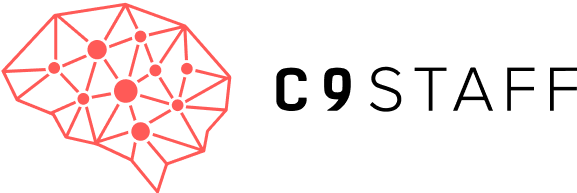Introduction

Navigating the complex digital landscape of today’s marketplaces, the role of an SEO specialist becomes not just advantageous but essential for boosting your business’s online presence and securing a competitive edge. This introduction sets the stage for why investing in a skilled SEO specialist is crucial for your business’s growth and sustained success.The impact of an SEO specialist on a business is profound—from dramatically enhancing your website’s visibility on search engines to driving substantial organic traffic and elevating user engagement. Such improvements are not merely about increasing numbers but are central to converting visits into genuine business opportunities.
This article aims to provide you with detailed insights and actionable strategies for identifying, hiring, and collaborating with the right SEO specialist. We will explore the multifaceted role of an SEO expert, including essential skills like keyword research, on-page and off-page optimization, content strategy, and data analytics.
Understanding these elements is key to appreciating what makes an SEO strategist pivotal in today’s digital narrative.We will delve into what to look for in ideal candidates and how to effectively integrate them into your teams. This information is crucial for ensuring that the specialist you choose aligns well with your business objectives and can truly transform your digital marketing efforts.
By the end of this, you will be prepared to navigate the subsequent sections that detail how to make informed hiring decisions, fostering an environment where your SEO strategies align seamlessly with your overall business goals. Engage with this guide to harness the full potential of SEO and ensure your business stands out in the ever-evolving digital arena.
Understanding the Need for a Professional Illustrator

A professional illustrator does more than just create art; they are visual communicators specializing in translating concepts and ideas into engaging visual forms. These artists come in various forms—digital illustrators who utilize sophisticated software to craft their artwork, traditional illustrators who may employ techniques involving pen and ink or watercolors, and specialists who focus on niche areas like fashion, medical illustrations, or children’s books. Each type of illustrator brings a unique set of skills and styles, catering to diverse industry needs.
What Is Illustration?
The Role of Professional Illustrators

Illustrators are not merely artists; they are essential visual translators who specialize in converting complex ideas into understandable and appealing visual formats. This section explores the various types of illustrators and their specific roles within different industries. Whether creating digital animations or detailed sketches, illustrators use their artistic talents to enhance communication between businesses and their clients, often transforming abstract concepts into tangible visuals that resonate with audiences.
Benefits of Hiring a Professional Illustrator
The advantages of employing a professional illustrator are extensive. From enhancing a brand’s visual identity to making marketing campaigns strikingly attractive, illustrators play a pivotal role. They not only improve the aesthetic appeal but also enhance the narrative, making it more accessible and engaging for a broader audience. Well-crafted illustrations can convey emotions and ideas that text alone cannot, bridging gaps between the brand and its target market through visual storytelling that captivates and persuades.
What Does An Agent Look For In An Illustrator?
Strategic Advantages of Illustration in Business

This final section underscores the importance of understanding the versatile roles and strategic value illustrators bring to a business. It emphasizes that hiring an illustrator goes beyond simple content enhancement—it’s about investing in a creative partnership that propels brand perception and market success. By aligning with skilled illustrators, businesses can leverage artistic expertise to not only stand out in a competitive market but also to forge deeper connections with their audiences through compelling visual narratives.
As you contemplate integrating professional illustrations into your business operations, consider how this decision aligns with your strategic objectives. Selecting the right illustrator involves more than appreciating their artistic style—it requires a keen understanding of their ability to communicate and amplify your brand’s message effectively. In doing so, you will not only enhance your visual content but also enrich your brand’s storytelling and market presence. By fostering a collaborative relationship with your illustrator, you unlock the potential to transform your business communications in a way that is visually innovative and deeply impactful.
Incorporating these subtitles not only organizes the content into digestible segments but also enhances reader engagement by clearly defining the narrative structure and key takeaways of each section. This structured approach helps guide the reader through the complexities of hiring and collaborating with illustrators, ensuring they have a comprehensive understanding of the benefits and strategic value that professional illustrators bring to the table.
Evaluating Potential Candidates

Finding the right illustrator is crucial to the success of your creative projects, and knowing where to look is the first essential step in this process. Whether you’re crafting a marketing campaign, developing a brand identity, or producing content that demands high-quality visuals, the right illustrator can make a significant difference.
Freelance Platforms
Platforms like Upwork, Behance, and Fiverr serve as vibrant marketplaces where you can browse thousands of illustrator profiles. These platforms allow you to view detailed portfolios and read reviews from previous clients, giving you insight into each illustrator’s reliability and quality of work. To navigate these platforms effectively, use specific search filters to find illustrators who specialize in the style or industry relevant to your project needs. When you find potential candidates, reach out with clear communication about your project’s scope and objectives to gauge their interest and suitability.
Professional Networks and Social Media
Professional networks such as LinkedIn and visually-oriented social media platforms like Instagram are invaluable for finding talented illustrators. These platforms offer a personal glimpse into the work and style of illustrators, as many share their latest projects and creative processes openly. To engage with illustrators on these platforms, follow their work, participate in discussions, and when appropriate, directly message them to discuss potential collaborations. This approach can help you build a rapport and get a sense of their personality and professionalism before formally engaging their services.
Art Schools and Professional Associations
Contacting art schools and professional associations can also be a fruitful avenue to explore. Art schools often host portfolio days, which are great opportunities to discover emerging talent and speak directly with the artists about their work. Professional associations typically have directories of members available for hire and may organize events or exhibitions where you can meet illustrators face-to-face. Attending these events allows you to see their work in a broader context and start conversations that could lead to future projects.
Each of these avenues offers unique advantages and might suit different needs depending on the nature of your project. Freelance platforms are ideal for finding a wide range of talents and comparing options quickly. In contrast, professional networks and direct interactions at art schools or associations can provide deeper insights into an illustrator’s professional ethos and creative approach.
As you explore these options, remember that finding the right illustrator involves more than appreciating their artistic skill—it’s about ensuring they possess the professional attributes needed for a successful collaboration. Take the time to communicate your vision clearly and listen to their creative input, establishing a partnership that enhances both the process and the final product. This collaborative spirit not only ensures the success of your current project but also sets the foundation for future creative endeavors.
Finding the right illustrator is crucial to ensuring your creative project not only meets but exceeds your expectations. This process begins with a thorough evaluation of potential candidates to confirm that their style, experience, and professionalism align with your project’s vision and goals.
Reviewing Portfolios
When examining an illustrator’s portfolio, focus on identifying a style that resonates with your brand’s aesthetic and the specific demands of your project. An illustrator’s portfolio should give you a window into their creative world and offer insights into their versatility across various media, styles, and subjects. This range is vital as it shows an illustrator’s ability to adapt to different creative challenges, which is particularly important if your project might evolve or span different themes.
Consistency in quality across different works is another critical factor. This consistency suggests a high level of professionalism and mastery of their craft, which are essential for ensuring that the deliverables you receive maintain the highest standards. Look for indicators of thoughtful composition, attention to detail, and a style that carries through various pieces without diminishing in quality.
Conducting Interviews
Interviewing potential illustrators provides deeper insights into their experience and suitability for your project. During interviews, consider asking about:
- Their creative process and how they approach new projects.
- How they handle revisions and feedback.
- Their previous experience with projects in similar industries or of similar scopes.
Understanding their communication style is also crucial—ensure it complements how your team operates to avoid any collaboration issues down the line. This alignment is essential for maintaining a smooth workflow and ensuring that project updates and revisions are handled efficiently.
Checking References and Testimonials
Verifying an illustrator’s reliability and quality of work through references and testimonials is a must. Reach out to past clients or review feedback available on professional platforms or the illustrator’s own website. Positive feedback and strong references often indicate not only skill and quality but also the illustrator’s ability to meet deadlines and maintain professional communication.
Good references can reassure you of their ability to handle projects similar to yours and their prowess in delivering exceptional work on time. In contrast, any signs of consistent negative feedback should be considered a red flag, prompting further review or consideration of other candidates.
Carefully evaluating each potential illustrator is about more than scrutinizing their artistic ability; it involves assessing their professional attributes to ensure they can successfully collaborate on your project. This selection process is critical, as the right illustrator will significantly impact the quality and execution of your creative vision.
Take your time during this phase—choosing hastily might lead to setbacks or a final product that doesn’t meet your expectations. Remember, a successful collaboration with a professional illustrator not only enhances your project but also strengthens your brand’s overall presentation and market impact.
Best Practices for Working with an Illustrator

When embarking on a creative project with an illustrator, establishing clear guidelines and maintaining open communication lines from the outset are paramount to ensuring a smooth collaboration that meets the expectations of both parties involved.
Setting Clear Expectations
The foundation of any successful project lies in the clarity of its initial agreements. It’s crucial to have clear, detailed contracts that outline all project specifics, including scope, timelines, payment terms, and deliverables. This comprehensive approach eliminates ambiguity, ensuring that both you and the illustrator fully understand the project requirements and expectations. Additionally, suggest creating a timeline that includes milestones and deadlines to keep the project on track and manage time effectively. This structure not only helps in monitoring progress but also in adjusting the pace of work as needed, avoiding any last-minute rushes or delays.
Communication
Effective communication is the lifeline of your project. Maintaining open lines of communication throughout the project is essential. Regular check-ins and updates can be facilitated through weekly calls, emails, or the use of project management tools. These interactions allow you to discuss progress, address any emerging issues, and make necessary adjustments along the way. It’s also important to establish a feedback loop early in the process. Ensuring that feedback is timely, constructive, and clear helps maintain the project’s direction and quality, allowing the illustrator to make adjustments that align with your vision while fostering a collaborative atmosphere.
Handling Revisions
Revisions are a natural part of any creative process. Providing guidance on how to give constructive feedback is crucial. Encourage being specific with feedback, focusing on both what works and what doesn’t, and explaining why. This clarity helps the illustrator understand your perspective and what you aim to achieve, which empowers rather than discourages them. Additionally, negotiate revisions clearly by setting out parameters for what is included within the initial project scope versus what might require additional time and budget. This transparency helps manage expectations and ensures that both parties are on the same page regarding the project’s scope and the extent of revisions allowed.
These best practices are not merely procedural necessities but are fundamental to fostering a productive, respectful, and successful partnership with an illustrator. The right approach to collaboration can lead to a final product that not only meets but often surpasses the envisioned outcomes. As you move forward, approach these collaborations with openness and preparedness, ready to engage in a process that is both creatively fulfilling and rewarding for both you and the illustrator. This mindset will not only result in a successful project completion but will also build a relationship that could lead to more collaborative opportunities in the future.
Scaling Your Visual Content
As your business evolves and your projects expand in scope, the complexity of your marketing demands will inevitably increase. This growth often necessitates a strategic scaling of your visual content. If you’re finding yourself at this juncture, it’s crucial to recognize when and how to effectively enhance your creative capacity.
When to Scale Up
Let’s discuss some key indicators that suggest it’s time to increase your visual content output or bring more illustrators on board. One primary signal is the expansion of your product lines, which may require fresh visuals to match new offerings. Similarly, entering new markets can demand a diversification of your visual approach to cater to different cultural tastes and expectations. Additionally, intensifying your marketing efforts to reach a broader audience or increase engagement on digital platforms often requires an injection of new, diverse visual content that resonates across various demographics.
It’s essential for you to assess your current resources and determine if your existing team can meet these expanding needs. If your current workflow is stretched thin, or if the creative demands begin to exceed your team’s capacity to deliver quality content promptly, it’s a clear sign that scaling up your team of illustrators is necessary to sustain or even accelerate your business growth.
Maintaining Consistency
As you bring more illustrators on board to meet increased demand, maintaining a consistent brand identity across all visual content becomes a significant challenge. To ensure coherence, it’s imperative to have a robust style guide. This guide should be comprehensive, covering all aspects of your brand’s visual identity from color palettes and font choices to the overall tone and style of illustrations. This document will serve as a critical reference for all illustrators, ensuring that their work aligns with your brand’s established aesthetic.
Moreover, consider implementing regular training sessions or workshops for new illustrators. These sessions can help them understand your brand’s core values and visual identity deeply. Such initiatives are crucial in ensuring that all produced content reflects the brand’s character and meets your standards of quality.
Scaling Techniques and Integration
As you integrate new illustrators, it’s also essential to use techniques that foster seamless collaboration among your growing team. Utilize digital asset management tools to share resources and maintain a centralized repository of artwork and guidelines, ensuring everyone has access to the same materials. This integration helps in minimizing discrepancies in style and execution.
Continuous Quality Control
Regular reviews and quality checks should become routine. Establishing a system of regular peer reviews and supervisory checks can help maintain high standards and consistency across all produced work. These reviews also provide a platform for ongoing feedback, fostering a culture of continuous improvement among your team of illustrators.
Scaling your visual content is not just a necessity but a strategic move that should be well-planned and timed correctly. Effective management and oversight are critical as you expand your team of illustrators. This ensures the quality and consistency of your visual content remain high. Approach this expansion with both excitement and meticulous planning. Each step you take should positively contribute to your brand’s overall narrative and market presence.
Embrace this phase of growth with confidence, knowing that a well-structured approach to scaling will not only enhance your capacity to produce engaging content but also strengthen your market position and brand perception.
Conclusion

As we conclude this comprehensive guide on hiring an illustrator, let’s directly address what you’ve learned and how you can implement this knowledge to enhance your projects effectively. Understanding the role of an illustrator and the various types available—be it digital, traditional, or industry-specialized—is crucial. These professionals do more than create; they transform concepts into compelling visual stories that can significantly enhance your branding, marketing, and overall narrative.
You now know where to look for top talent, including freelance platforms, professional networks, social media, and art schools. Each of these sources offers a gateway to discovering illustrators whose skills can align with your creative vision. However, finding the right illustrator involves more than recognizing talent; it requires thorough evaluation. Reviewing portfolios, conducting insightful interviews, and checking references are essential steps to ensure that an illustrator’s experience and work ethic will meet the demands of your project.
We’ve discussed best practices for working effectively with illustrators, such as establishing clear expectations through detailed contracts, maintaining open lines of communication, and managing revisions efficiently. These strategies are not just procedural; they are fundamental to fostering a productive and respectful collaboration.
Now, I encourage you to take the next step toward hiring an illustrator with confidence. Apply the strategies discussed here to find a professional who not only meets your requirements but can also bring a unique visual dimension to your work. Approach this process with enthusiasm and an openness to the creative possibilities that skilled illustrators offer. With the right approach, this collaboration can lead to outstanding results that propel your brand forward and resonate deeply with your audience.
Embrace the journey of transforming your creative projects with the insights and confidence you’ve gained from this guide. The right illustrator is more than a service provider; they are a partner in your creative success.
Assume the role of a brilliant marketer employ first principles thinking to identify an exceptional series of writing prompts for use in Midjourney. These prompts should have the highest likelihood of generating outstanding photorealistic images for each section of this article, thereby enhancing the narrative storytelling already woven into the writing. The goal is to use visual story telling to enhance the educational knowledge already included within the text so that the images create the most immersive story telling experience possible.




